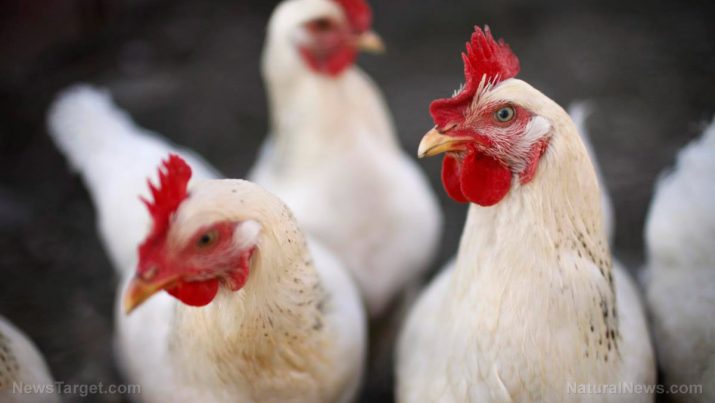Guidelines for raising poultry in the mountains
Monday, January 06, 2020 by Darnel Fernandez
http://www.bugout.news/2020-01-06-guidelines-for-raising-poultry-in-the-mountains.html

Anyone remotely interested in prepping or general survival has probably thought about taking care of animals for food. Chickens are by far one of the easiest animals to care for. They are economically feasible, provided that you’re up for a little hard labor. Turkeys are also in a similar boat, albeit requiring a little more care.
Learning how to have a self-sufficient food source is essential for any prepper, especially if you plan on going off-grid. However, most people going off-grid may find themselves setting up camp in remote locations like the mountains. Fortunately, chickens and turkeys are adaptable and hardy animals that can be raised in any environment – if you provide them with proper care and treatment. (h/t to SurvivalBlog.com)
Don’t chicken out on raising poultry
Raising poultry can be a very fun and rewarding endeavor for any homesteader looking to make a quick buck or to have a consistent supply of food. Unfortunately, it isn’t as easy as letting your chickens and turkeys run free and feeding them every so often. Poultry, especially when up in the mountains, still need a lot of care and proper living conditions to provide you with the best quality meat and eggs. Here are a few guidelines you can follow to keep your poultry happy and healthy up in the peaks:
Fences
You can’t really keep poultry cooped up in their own coops or cages. You should give them the liberty to roam around for exercise or even to graze. However, you shouldn’t give them too much freedom. You can use cattle panels with steel t-posts to surround the area you want the poultry to roam.
Shelters
While giving poultry a lot of space to roam is good, they still need a place to sleep and hide. This is where chicken coops and turkey shelters come in. You can design and build your very own portable chicken coop so you can move the it to fresher pasture when needed. Turkeys can also use a similar movable pen.
Breeds
Choosing the right breed of chicken and turkey is important, especially if you want to live up in the mountains. While these animals are adaptable, some breeds are significantly hardier than others. For turkeys, the Narraganset breed is extremely cold-hardy and can provide you with beautiful large spotted eggs from March to September. As for chickens, the Bresse chicken is considered the “Queen of Chickens” or the “Chicken of Kings” which is known as a good meat bird prized in French cuisine.
Incubating
Incubating eggs to get more chickens isn’t recommended because even entry-level incubators can cost close to a thousand dollars. Instead, you should opt to buy young chicks through reputable hatcheries.
Brooding
Not to be confused with the conventional meaning of the word, brooding for poultry refers to the process of getting newly hatched birds through the first few weeks of their lives. You can build specialized brooding pens with rubber mats to provide insulation and sure footing for the young birds. Additionally, you can provide the birds with heat lamps to keep them warm and make sure the roof is made of thick cardboard to prevent the heat from escaping. When the chicks’ wing feathers are fully developed, they are free to leave the brooder.
Feed
Giving the right feed to your animals is the most important part of animal keeping. Newly hatched birds can be fed a high protein diet without any medication. After a month or so with this starter feed, you can start transitioning them to eating grower or finishing feed. Unless you’re growing the Cornish variety of birds, which eat everything on sight, keep clean feed and water in front of the birds at all times. Most poultry are foragers and should spend most of their time roaming the pasture. You might be surprised to see a significant decrease in spiders and other crawling pests around your house if you own poultry.
Raising poultry in the mountains may seem like a daunting task at first. But with a little time and effort, any homesteader can develop this into an enjoyable hobby to keep themselves busy while also giving them the food to sustain themselves for many years. (Related: How to create a self-sufficient home and life.)
Sources include:
Tagged Under: Tags: animal care, chickens, farming, food supply, green living, harvest, homesteader, homesteading, how-to, off grid, Poultry, prepper, prepping, raising animals, raising chickens, self sufficiency, survival, survivalist, sustainable living, turkeys

